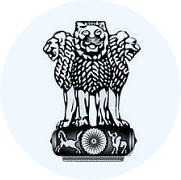UPSC Exam > UPSC Notes > CSAT Preparation > Overview: Angles & Lines
CAT Angles & Lines : Basic Concepts and Notes PDF
Angles
Based on the measurement, angles have been classified into different groups.
1. Complementary Angles
- Two angles taken together are said to be complementary if the sum of measurement of the angles equal to 90o.
- If ∠ A + ∠ B = 90o then ∠A is complementary of ∠B and vice versa.
2. Supplementary Angles
- Two angles are supplementary if the sum of their measure is 180o.
- If ∠ A + ∠ B = 180o then ∠A is supplementary of ∠B and vice – versa.
Question for Overview: Angles & LinesTry yourself:Two angles whose sum is equal to 180° are called:
View Solution
➢ Linear Pair
- Two angles were drawn on the same point and have one arm common. The sum of these angles is 180o, then they are said to be linear pair of angles.

- ∠AOP and ∠POB are linear pair of angles.
➢
Adjacent Angles
- Two angles are adjacent if and only if they have one common arm between them.

- In the above figure, ∠ABC and ∠BCD are adjacent angles, since they have BC as their common arm.
Properties of Lines
- A line consists of infinite dots. A line is drawn by joining any two different points on a plane. Two different lines drawn can be either parallel or intersecting depending on their nature.
- If two lines intersect at a point, then they form two pairs of opposite angles (as shown in the figure), which are known as vertically opposite angles and have same measure. In the figure, ∠PRQ and ∠SRT are vertically opposite angles.
- Also, ∠QRS and ∠PRT are vertically opposite angles.

- Also, ∠x + ∠y = 180o and are Linear pair angles.
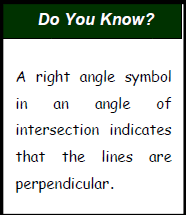
➢
Perpendicular Lines
➢
- An angle that has a measure of 90o is a right angle. If two lines intersect at right angles, the lines are perpendicular.
Example: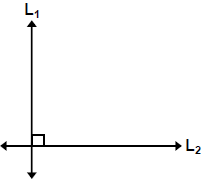
L1 and L2 above are perpendicular and denoted by L1 ⊥ L2.
➢
Parallel Lines
➢
- Two lines drawn on a plane are said to be parallel if they do not intersect each other. In the figure below lines, L1 and L2 are parallel and denoted by L1 || L2

➢
Parallel lines and Transverse
➢
- If a common line intersects two parallel lines L1 and L2, then that common line is known as transverse.
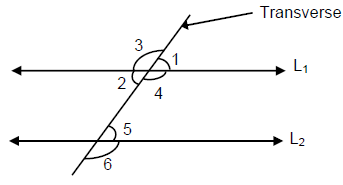
- Pair of corresponding angles = (∠1 & ∠5) and (∠4 & ∠ 6)
- Pair of internal alternate angles = (∠2 & ∠5)
- Pair of exterior alternate angles = (∠3 & ∠6)
- Vertically opposite angles = ∠3 & ∠4
- For parallel lines intersected by the transversal, the pair of corresponding angles, interior alternate angles and exterior alternate angles are equal.
- ∠1 = ∠5, ∠2 = ∠5, ∠3 = ∠6 and ∠3 = ∠4
Question for Overview: Angles & LinesTry yourself:If AB || CD, EF ⊥ CD and ∠GED = 135° as per the figure given below. The value of ∠AGE is:
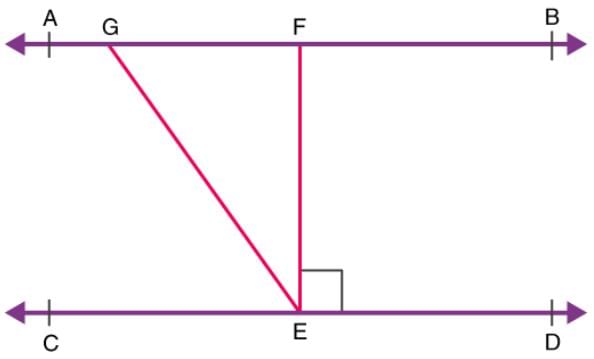 View Solution
View Solution
The document CAT Angles & Lines : Basic Concepts and Notes PDF is a part of the UPSC Course CSAT Preparation.
All you need of UPSC at this link: UPSC
|
208 videos|272 docs|138 tests
|
FAQs on CAT Angles & Lines : Basic Concepts and Notes PDF
| 1. What are the properties of lines? |  |
Ans. The properties of lines include being straight, having infinite length, and extending in both directions indefinitely.
| 2. What is an angle? |  |
Ans. An angle is the figure formed by two rays with a common endpoint, called the vertex. It is typically measured in degrees or radians.
| 3. How are angles classified? |  |
Ans. Angles can be classified based on their measurements. They can be acute (less than 90 degrees), right (exactly 90 degrees), obtuse (greater than 90 degrees but less than 180 degrees), straight (exactly 180 degrees), or reflex (greater than 180 degrees).
| 4. What is the sum of the angles in a triangle? |  |
Ans. The sum of the angles in a triangle is always 180 degrees. This property holds true for all types of triangles, regardless of their shapes or sizes.
| 5. How are lines and angles related? |  |
Ans. Lines and angles are closely related as angles can be formed by the intersection of lines. Lines can also be used to measure angles, and angles can help determine the position and orientation of lines in various geometric shapes.
Related Searches




